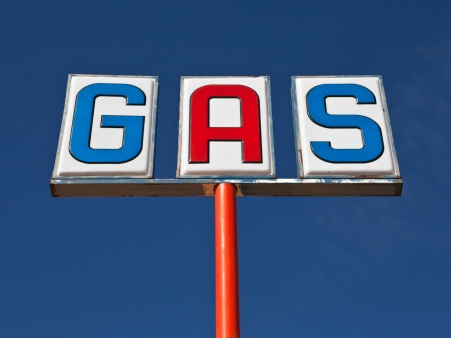
When gasoline prices soared in February of this year, there was plenty of doom and gloom about the direction of U.S. gasoline prices for the rest of 2013. The price jump was the result of the unexpected closing of the Port Reading, N.J., refinery by Hess Corp. (NYSE: HES) and the scrum among traders for adequate supplies. Gasoline prices spiked, followed by a spike in Brent crude. After a few weeks, order was restored and prices for both gasoline and Brent started falling again.
Today’s report on personal income and spending, which we covered earlier, confirms the price drop. Personal consumption expenditures for energy goods and services fell 2.7% in March, after rising 5.8% in February. Compared with March 2012, last month’s drop in energy prices was 1.6%.
There are several reasons for the decline. First, more and cheaper crude oil is getting to the eastern portion of the United States from North Dakota and Canada. Second, U.S. demand is falling as more fuel-efficient cars are being purchased, replacing older less fuel-efficient models. Third, it is not in the best interests of major OPEC producers such as Saudi Arabia, Kuwait and Abu Dhabi for prices to remain high. These countries can afford to have Brent prices fall by half or so from current levels because they can call on their cash reserves until prices stabilize.
Energy economist Philip Verleger offers several reasons why the major OPEC producers could benefit from lower prices. First, demand may pick up in Europe as lower energy prices help consumers in countries caught up in the eurozone austerity programs. Second, as prices fall the privately held supermajors like Exxon Mobil Corp. (NYSE: XOM) and Royal Dutch Shell PLC (NYSE: RDS-A) would have to cut back on their massively expensive exploration and production projects. Third, if the price drops enough, the drive for renewables will stall. Fourth, Russia cannot afford to follow suit. And last, other major exporters like Iran and Iraq will be squeezed.
As Verleger puts it in his most recent weekly newsletter:
Only increases in consumption combined with declines in output or sharp production cuts when use is dropping will stabilize prices. Neither outcome is likely in the near future.
The price differential between Brent and WTI has fallen to around $10 a barrel, and the movement has mostly come from falling Brent prices. That is the effect of a sharp rise in North American supply and falling demand. And there are more declines yet to come.
The Average American Has No Idea How Much Money You Can Make Today (Sponsor)
The last few years made people forget how much banks and CD’s can pay. Meanwhile, interest rates have spiked and many can afford to pay you much more, but most are keeping yields low and hoping you won’t notice.
But there is good news. To win qualified customers, some accounts are paying almost 10x the national average! That’s an incredible way to keep your money safe and earn more at the same time. Our top pick for high yield savings accounts includes other benefits as well. You can earn up to 3.80% with a Checking & Savings Account today Sign up and get up to $300 with direct deposit. No account fees. FDIC Insured.
Click here to see how much more you could be earning on your savings today. It takes just a few minutes to open an account to make your money work for you.
Our top pick for high yield savings accounts includes other benefits as well. You can earn up to 4.00% with a Checking & Savings Account from Sofi. Sign up and get up to $300 with direct deposit. No account fees. FDIC Insured.
Thank you for reading! Have some feedback for us?
Contact the 24/7 Wall St. editorial team.




